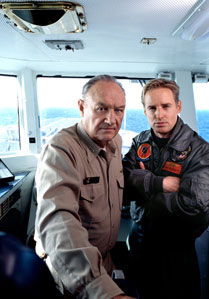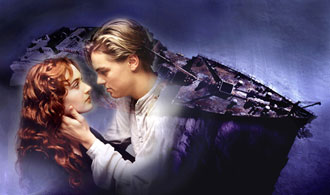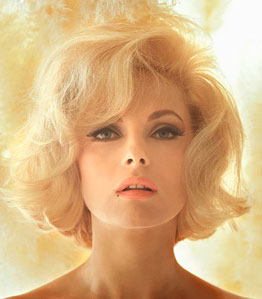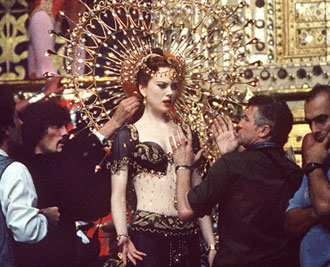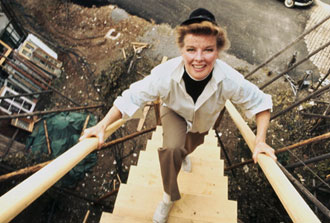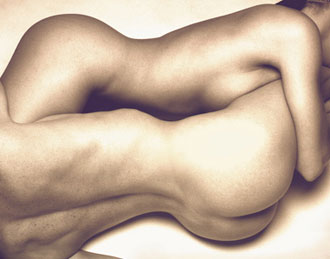|
From PHOTOWORKSHOP.COM Photos to Inspire
Douglas Kirkland has photographed a wide variety of subjects throughout the years, ranging from automobiles to portraiture, although he's best known for his fashion and celebrity work, and has photographed such luminaries as Marilyn Monroe, Elizabeth Taylor, Pierre Cardin, Katherine Hepburn, Charlie Chaplin, Judy Garland, Orson Welles, John Wayne, Robert Redford, Faye Dunaway, Angelina Jolie, Sophia Loren, and Marlene Deitrich, among many others. He has also worked on the sets of more than 100 motion pictures, including Butch Cassidy and the Sundance Kid, 2001: A Space Odyssey, Out of Africa, Moulin Rouge and Titanic, to name just a few. Besides having a lifelong love of the camera, Kirkland has a refreshing zest for life. Defining Several Decades "This book has had a very odd history," Kirkland says of Freeze Frame. "It started with a show in Rome, which is briefly recounted in the book itself. A friend brought me to a gallery in Rome a year ago September, in a very fashionable area like Greenwich Village." Although there had never been a film festival in Rome, the very first one took place that autumn. "I was asked to do a show at this new gallery to parallel the festival," he explains. "At first I thought we couldn't do it because we were very busy, but Francoise (his wife and business partner) said, 'yes we can.'" To get images for the show, he adds, they went through their considerable photo archives and found many images that had never been published. The show was quite successful and led to doing Freeze Frame, the book, which spans 50 years of Kirkland's wealth of images of celebrities on movie sets, behind the scenes, and on stage. He discusses the book's cover, which was photographed on the set of Camelot. "The characters are all in costume donned in the heaviest of winter clothing, but it's interesting to see the crew shooting inside, all wearing tee-shirts," he comments. "There's a lot about my life in here," says Kirkland of the book and its rich history. "For most people, it parallels the memory of movies from certain periods." As an example, he points out a photo inside the book of Peter Sellers in a car that Kirkland took while Sellers was on location for a movie in Rome. "It became a symbol of the show," he says. "This was done on a Sunday. We jacked up the side of the car very quickly without permission, and it looks like it's swerving. You can see that people are looking around and wondering what's going on." In this series of photographs (which he sketched out on paper beforehand), Kirkland captured Sellers playing the part of a Paparazzi, with numerous cameras dangling around his neck and snapping photos of his then-wife, Britt Eklund. "He was an amateur photographer and a wonderful man," Kirkland points out. "That was the beginning of this book. We were in New York and showed these pictures inadvertently to our publisher, Marta. She saw this and said that she was interested in a book on the subject."
125 images from Freeze Frame are currently being shown in an exhibit at the Academy of Motion Picture Arts and Sciences' Grand Lobby in Beverly Hills through Sunday, April 20, 2008. The exhibit is free to the public, and is open Tuesday through Friday, 10 a.m. to 5 p.m. Saturday and Sunday, noon to 6 p.m. For more information, visit www.oscars.org, or call (310) 247-3600. A Passion for Photography Kirkland was born in Toronto, Canada. "I became intensely interested in photography at the age of 14 when I lived in a small town called Fort Erie near Buffalo, New York," he says. "I got a Speed Graphic, and went around town photographing everything from hockey games to babies and passport pictures, with flash bulbs." Kirkland says that he can't believe he's been doing photography for 50 years now--"And I still do it nearly every day. The bottom line for me is that I love photography. Not just photographing stars, but all types of photography. Photography is my first love," he declares. Kirkland once served as an assistant for Irving Penn in 1957 to '58. On one occasion, Penn went on location with his other assistants, and being the youngest, Kirkland was left behind in the studio. "Eager to make a good impression, I noticed that the large picture windows in the studio were dirty, so I cleaned them," he says. But his good intentions unfortunately backfired. As it turned out, having bright, clean windows interfered with the soft quality of light the dirt had given them, and Penn was a little unhappy to find them clean and sparkling. In 1958, Kirkland says he was shooting "everything under the sun--commercial, tabletop, portraits. Some people talk about their photographic specialties, but my specialty was everything; no limits." He lived in New York for about a year and a half, and free-lanced during this time. "In 1960, I was extremely happy to be hired by Look magazine as I was turning 25," he says, describing this experience as his dream job. "That's where I grew up as a more mature photographer, working for the magazine. There was almost unlimited film when you went out on assignment, and you had to give your interpretation of what you found." Kirkland's first assignment for Look was to photograph men's fashion at Cornell University. "They hired me to shoot color. I was the youngest photographer there at the time and the older photographers couldn't shoot color reliably," he says. "I represented the new generation coming in."
"People ask me how I got started photographing celebrities," he remarks. "I tell them that it was almost an accident." Kirkland was on a fashion assignment shooting bathing suits at Pismo Beach, California, when his boss at Look in New York called to ask him to meet with the magazine's movie editor, Jack Hamilton. "Elizabeth Taylor had agreed to do an interview with the magazine, but no pictures. I was told to go there and persuade her to let me photograph her," he says. Taylor hadn't been photographed in a formal manner for about a year and a half at that time because she had been very sick. "I went with the journalist, sat quietly through the interview, and at the end, I went to shake her hand and say goodbye," says Kirkland. "As I was doing that, I held her hand and looked her straight in the eye. I said, 'goodbye, it was very nice meeting you.' I was very respectful of her. I said to her again in a most earnest way, 'Can you imagine what an opportunity it would be for me--being new at this magazine--if you gave me a chance to photograph you.'"
The end of the story ("the beginning, really," he says) is that Elizabeth Taylor responded by telling the young photographer to come by the following evening at 8:30 p.m. "When I photographed her, it was extremely successful," he says. "That was my launch into photographing celebrities." Since that time, he's had the opportunity to take pictures of Taylor and other stars on movie sets, as publicity stills, and on numerous other occasions. Kirkland eventually became a contract photographer for Look and divided his time between shooting for this magazine and other important publications of the day, "with the exception of LIFE, which was their biggest competition." he says. This was the Golden Age of photojournalism. During this time, he photographed 25 pages of cars, which led to shooting for all the automobile manufacturers for a while. Altogether, he was on the staff of the magazine for four years, and during that time they sent him to Europe to shoot fashion. Celebrities and fashion became Kirkland's two principal subjects. Later, he went under contract with LIFE. "Look went out of business in 1971," he says, "and I went to work for LIFE immediately afterward." When this magazine was no longer published weekly, he continued to shoot for the monthly version of LIFE, and by this time, a lot of work started to come to him.
Kirkland says that he still shoots nearly every day. "We keep out of trouble," he chuckles. He still works internationally and in the U.S. with companies who license photographs throughout the years that are stored in his large archives. He also does charitable work for organizations like the Red Cross and Starlight Foundation. "It's not only about making money, but about doing the right thing," he says. "I'm very happy to give back." I comment on his great teamwork with his wife, Francoise, and he acknowledges, "I'm very lucky." She speaks three languages, handles all of the organization of his business (besides being a great cook), and plays an important role as Kirkland's business partner. He also employs several assistants. "We have some great people working with us," he adds. Accolades & Achievements Kirkland's next book, which will be published in August 2008, features the fashions and photographs of legendary designer Coco Chanel. Over the years, his images have been featured in a number of books, including Light Years, Icons, Legends, Body Stories, An Evening With Marilyn and the best-selling James Cameron's Titanic. Kirkland was also one of the producers and photographers of A Day in the Life of Canada.
 Learn more about Douglas Kirkland. © Copyright by PHOTOWORKSHOP.COM |
